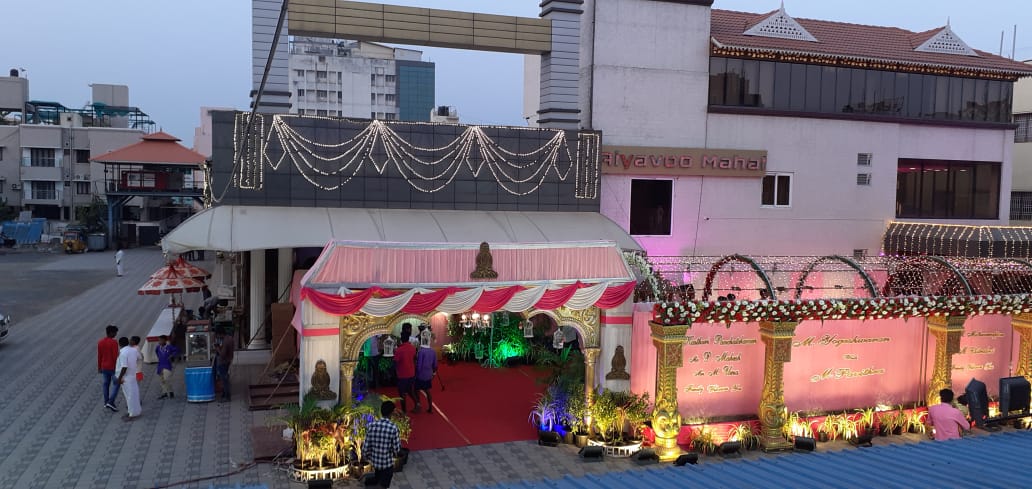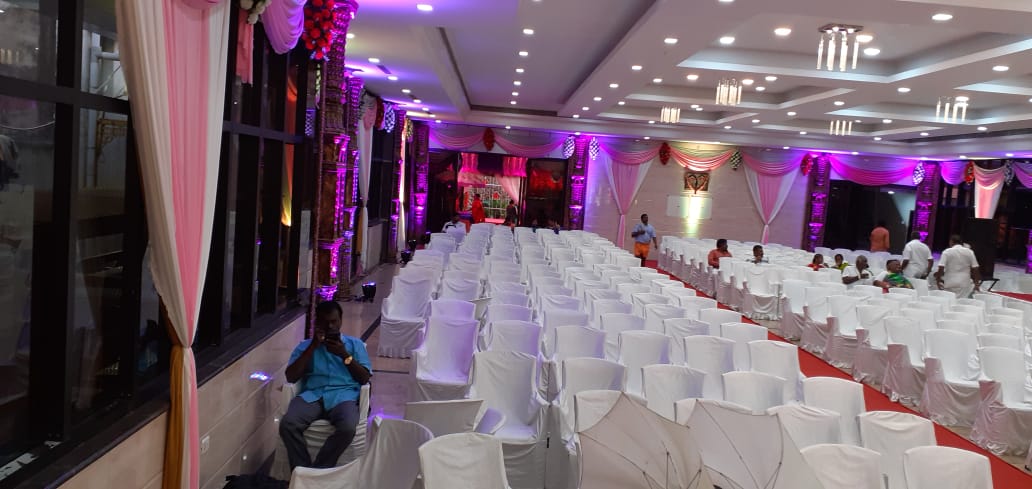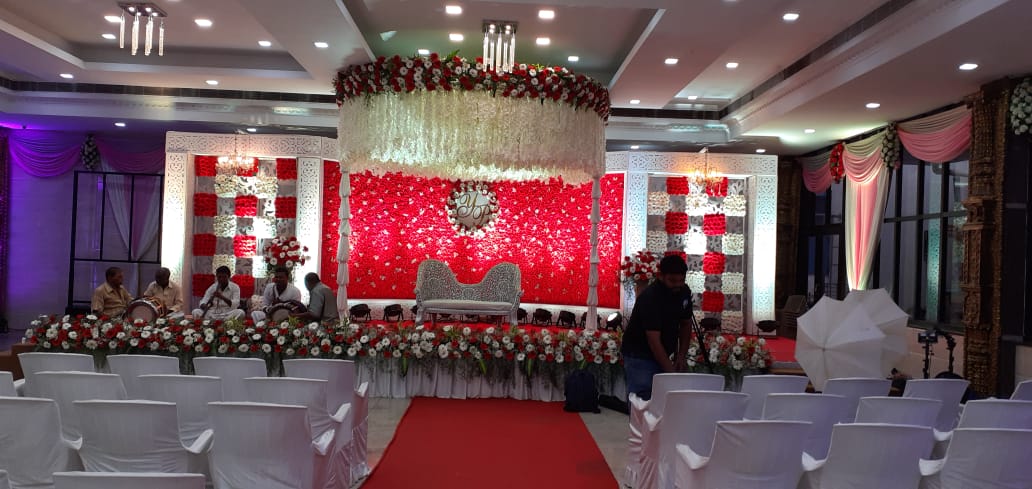Hindu weddings have been a sacred ritual for thousands of years. They are conducted using the ancient Sanskrit language and adhere to Vedic practices.
Hindu weddings are traditionally held in Kalyana Mandapams, sacred structures which symbolize purity and are revered as spiritual sites.
Agni Deva worship
Agni Deva is one of the Panchabhootas – five elements of nature – and is traditionally installed in the southeast corner of Hindu temples as a guardian deity. Legend has it that he is also associated with fire.
He is one of the five devas or prajapatis and Lord of Creation in India, revered by all Hindus as an ancient deity.
According to Vedic cosmology, Agni is one of the Pancha Mahabhutas alongside water (jal), air (vayu) and earth (prakriti). He created and sustains life.
The Kena Upanishad states that Agni was the first to discover and define Brahman, or the Universal Self. Therefore, he stands as a personification of this timeless essence that permeates all existence.
In ancient Vedic times, animal sacrifices were performed to appease Agni and guarantee a plentiful harvest. This ritual, known as Pasuyajna, was performed with six priests by tying the animal to a wooden stake called yupa before its immolation.
Agni was punished by his three elder brothers and forced to hide from them. When he saw them carrying out the sacrifice, he felt sure he was going to die but was persuaded back with a long life and share of the offering in Soma, an elixir.



In the Mahabharata, there is an intriguing story about Agni that parallels kalyana mandapam. This powerful and physically demanding practice requires abstaining from food or drink before beginning and must be completely emptying out, breathing in and out, as well as sweating during it.
Physical and psychologically taxing, it’s an experience not to be missed! It serves as a form of purification, connecting us from unknown circles back into familiar ones.
Sumuhurtham
The traditional Kalyana mandapam ceremony is an integral component of Indian weddings. It consists of multiple rituals and observances that unite the souls of the bride and groom eternally.
Sumuhurtham is one of the most anticipated events during a traditional Kalyana mandapam wedding. It marks the time when the bride dons her ceremonial white sari, signifying purity and strength. To accompany her are ten married women dressed in sacred garments carrying lighted lamps.
At this stage, the bride and groom are separated by a curtain, before sitting on the floor facing each other as elderly guests bless them with ‘akshantalu’ (mixed rice grains) while younger guests offer their wishes.
On each head, a special paste is applied that symbolizes their unbreakability and strength. It consists of slightly bitter cumin seeds mixed with sweet brown sugar, signifying that Suchita and Rabinder will remain bound together forever even through life’s trials.
Next, the couple is tied together by a sash made of turmeric paste and yellow thread (known as ‘Mangala Sutram’). This sash is tied with two specially designed pendants called’sutralu’ that represent mind, speech and deed.
After this, the couple takes an oath that they will love each other forever. Additionally, they make an offering of sweets as a symbol of their first meal together as husband and wife.
Another ritual observed in traditional Kalyana mandapams is the kanyadanam, or giving away of the bride to her groom. This ceremony serves to officially grant their daughter over to her future spouse and ensure a lifelong bond between them.
Once the kanyadanam ceremony is concluded, both bride and groom don their first set of wedding clothes. The bride is accompanied by her mother while the groom is joined by his sister-in-law.
The bride and groom then engage in a playful game where they pour ‘tambralu’ (water) over each other’s heads. This is an exhilarating activity enjoyed by all.
Kanyadanam
Kanyadanam, a Hindu ritual performed during marriage, is an unforgettable moment for both bride and groom. It brings together religion, spirituality, and emotions into one unforgettable experience.
This ceremony is believed to have originated in 15th century stone inscriptions from Vijayanagara, India but is interpreted differently across South Asia. It serves as a symbolic act that unites bride and groom when they stand before Panchabhutaalu – five elements essential for life.
At a traditional Kalyana mandapam, a priest recites Vedic hymns as the newly married couple takes their vows in front of Agni Deva. As part of their offerings to the god, they offer prayers and present rice grains as symbolic representations of purity and fertility – two essential attributes in marriage.
After the ritual, the bride and grooAiyavooit in a circle. Their parents wash their feet before leading them in chanting a devotional song.
Many view the ritual as an act of honoring and respecting both parties’ parents. It serves to symbolize a father’s love and protection for his daughter and her future husband-to-be.
Hinduism holds performing this ritual as one of the highest achievements for any man. It derives from Manu Smriti text, which states that every woman needs a male guardian before marriage; therefore, during this ceremony, her father passes her guardianship over to her groom.
In a traditional Kalyana mandapam ceremony, the bride and groom are escorted by ten married women dressed in sacred garments. Six of these ladies carry lighted lamps and sacred rice while the remaining four bear flowers, coins, and other tokens of their affection.
The traditional Kalyana mandapam is exquisitely decorated with mango leaves and fresh flowers for a timeless elegance. What an exquisite setting to host your wedding ceremony!
No matter the size of your wedding party – whether an intimate gathering for 50 guests or a grand affair with over 1,000 guests – the top kalyana mandapams offer everything you need to make it perfect. These facilities boast various amenities and features at reasonable prices, plus they’ll help plan everything start to finish. With just some research, you’re sure to find the ideal kalyana mandapam for your unforgettable day!
Thaali ceremony
Traditional kalyana mandapams are places of worship for the bride and groom, their families and friends. It typically consists of a hall or open-air courtyard decorated with murals, statues, flowers and plants; some may even feature music instruments like tablas and drums.
Thaali, or Thaali ceremony, is held in traditional Kalyana mandapams and symbolizes the bond between two people. It’s performed by both the bride and groom before the wedding begins as a symbolic representation of their union.
At the ceremony, couples bow their heads first to God, then the priest, then their parents and elders. Finally, turmeric-coated rice is sprinkled on their heads as a sign of gratitude from all present.
This ritual is performed to symbolize the strength and purity of those about to tie the knot, as well as to bring hope for their future together.
Couples then exchange garlands as a sign of their acceptance as life partners, an ancient Hindu custom that marks the start of a new chapter in their lives.
In this ritual, the couple is escorted by ten married women (Sumangali), holding plates of sacred rice and small lit-lamps. Six of the women wear clothes of religious significance with a red border, while the remaining four wear white.
They then enter the mandapam and sit opposite one another with a partition Terasala made by a curtain between them. The priest recites holy mantras over them as they sit there in silence.
After marriage, the groom is considered an incarnation of Lord Vishnu and must chant a mantra: “Dharmeca Artheca Kamaya Mokshaca Nati Carami”, meaning “I will remain her companion in joy and sorrow forever”. This phrase serves to ensure that they remain together through life’s ups and downs.
Gowri Devi poojas are then performed in traditional kalyana mandapams to invoke her blessings and protection. It is believed that she represents everlasting love, shielding her husband from poison.
